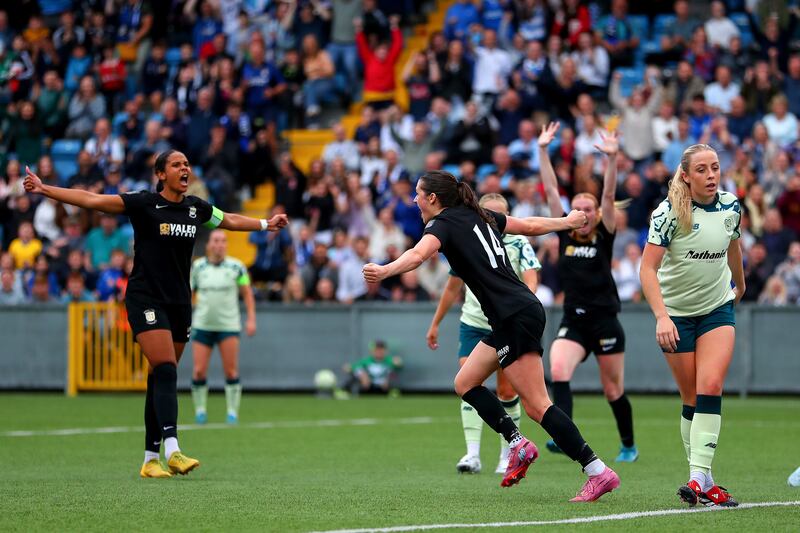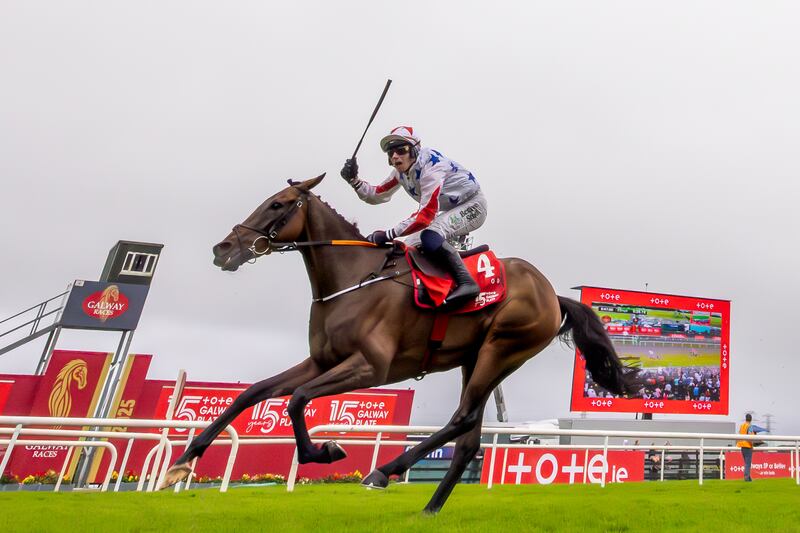Warriors. Family. Unity. Friendship. Sacrifice. Proud. Privileged. The words are scribbled in block capitals on a flip chart in the Ireland women’s Sevens team room in a Toulouse hotel capturing the essence of identity and intent as articulated by the players.
The French city hosted the France Sevens, a Men’s, and Women’s tournament on the World Series, at the lavish facilities of the Stade Ernest Wallon, home of the five-time European champions, Toulouse.
It is an idyllic backdrop to a tournament that has attracted 28 teams, (16 men’s and 12 women’s), and for the women it represented the final destination of a globetrotting fixture list as Aiden McNulty’s Ireland squad chased a podium position to bookend an excellent campaign.
0 of 4
The World Series Sevens community resembles a travelling circus, one that spends in an inordinate amount of time cheek by jowl, travelling, eating, rehabbing and whiling away down time between matches. Being able to switch off is a virtue, so too being able to nap in the daytime.
READ MORE
There is a collegiality that is at odds with the ferocious collisions on the pitch; it is quite disconcerting initially to an outsider, but it becomes easier to understand when the living arrangements are revealed. Ireland was one of six teams staying in a hotel that had two lifts in perpetual motion that swallowed up and disgorged players.
A pool table and table tennis table sat in the lobby, a boules pit or terrain as it is known, too, while through the restaurant doors lay a 15-metre pool. Wearing a game face would be tedious so players do not bother. Everyone understands the address code, casually polite, a nod or a word here, nothing that required either party to stop. Victors and vanquished often travel on the same bus.
My job is to be that person that gets things fixed without it impacting on performance. They just need a reassurance to know it’ll be okay.
— Eimear Flannery
Teams are each allocated a designated space in the hotel restaurant, where there is a buffet arrangement for all meals. The consensus is the food is good but essentially it serves as a fuel source. Everything provided is parsed for nutritional value.
Most of the carbohydrate loading is done the day before a tournament starts. Players eat four or five meals a day plus snacks depending on the playing itinerary. They can be up as early as 6am and trying to force down a couple of spoonful of mashed potatoes at 10.30pm that night.
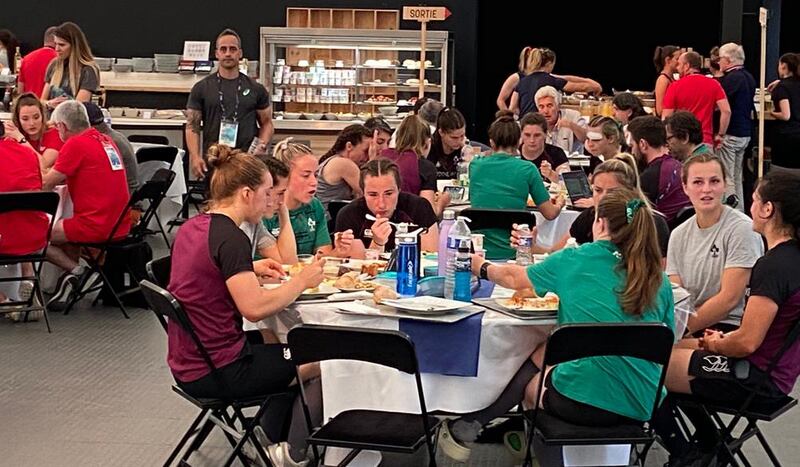
When Ireland played a Six Nations match against France in April, Trevor Brennan presented the jerseys. On the Thursday night, the day before the France Sevens started, parents and family of the unsuspecting players were secreted into the team room to perform an identical task. There were cheers, tears, and cries of “shift,” as one team member had her jersey presented by her boyfriend.
For those whose family could not make it — or in one case, was stuck in traffic — injured and extended squad members, who had been flown out for season finale, fulfilled the role of jersey givers.
Game day begins with filling in a sleep questionnaire first thing to mobility, stretching and physio before leaving the hotel. Orlaith Curran (strength & conditioning) and Jo Montgomery (head physio) oversee the process. McNulty (head coach) leads the team meeting.
Galway native Eimear Flannery’s official title is women’s rugby national team programme manager — the Men’s Sevens also falls under her remit — but it’s more accurate to summarise her role under the catch-all “she fixes problems”, from lost gumshields, boots, passports, to, on one of the nights, sorting out a miscommunication about dining arrangements. She is organised by nature, although that has been honed by the role. She inherits all problems.
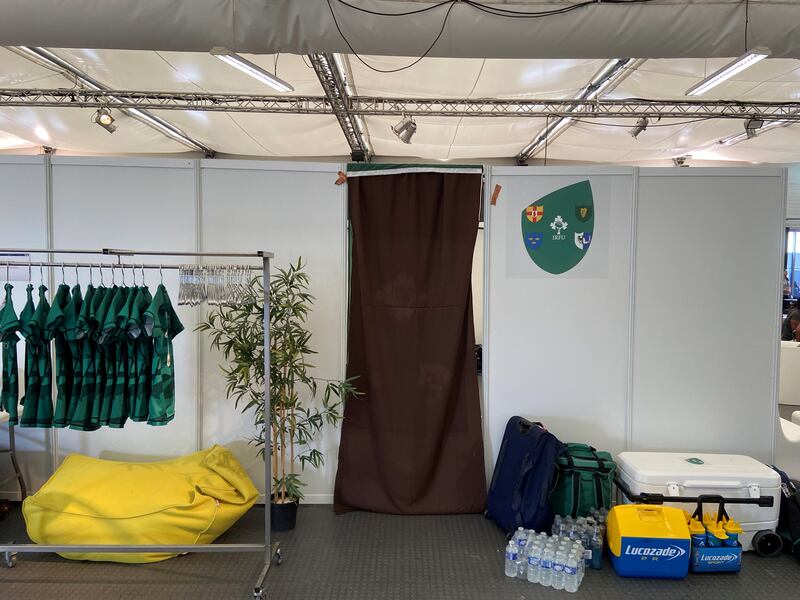
She said: “Someone will need your support or a solution. My job is to be that person that gets things fixed without it impacting on performance. They just need a reassurance to know it’ll be okay. I don’t know if it will be okay. If I can get it sorted, I will, but I will always be honest.”
The teams are housed in an indoor arena at the Stade Ernest-Wallon, think Simmonscourt, partitioned into 28 dressingrooms — no roof, no door just a curtain — in the middle of which sits a portable physio table surrounded by 13 players vying for space. The Ireland Women’s team has festooned the walls with individual job spec reminders. New Zealand are next-door neighbours.
Outside, an open-ended mini marquee houses six wheelie bins that serve as communal ice baths and further along are the toilets and showers. The footfall in dining area rarely diminishes. Music from the respective teams’ Boom Boxes (ghetto blasters for those over 30) vies for supremacy. The Fijian teams sing before matches.
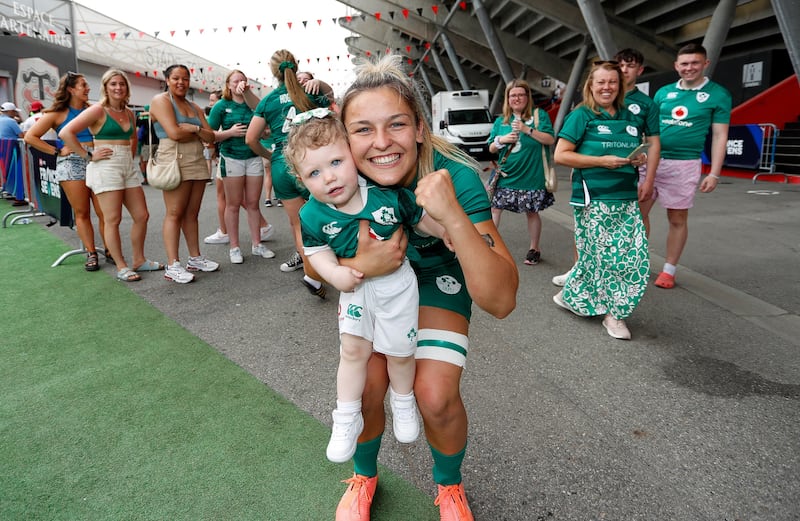
Every minute is accounted for on game days when it comes to match prep. Opposing teams are allotted a time to warm-up, which they do on the same pitch, usually about 12-minutes duration, before making a short walk to the dressingrooms; they are in the tunnel 60 seconds before bursting on to the pitch, no eye contact just lots of shouting.
Peter Donnelly, who won two All Ireland senior football championships with Tyrone — he is the current S & coach with the county — joined the IRFU last August as a Sport Scientist in the Sevens programme and was in Toulouse in an S & and team manager capacity with James Topping’s men’s squad.
After two years with the Ulster rugby academy, he is thoroughly enjoying his new role. “I love all the physical qualities of Sevens, speed, deception, agility, movement, skill under fatigue. I love that tournament environment where you don’t have that much time to dwell on things. You must respond to setbacks quickly and get back on the road again in pitting yourself as world-class teams.”
He offered a layman’s guide to some of the physical markers in Sevens. “A player would run 1.7-2k in a tournament game. Over a weekend a player could run 18 kilometres including warm-ups. We would look at a distance per minute marker.
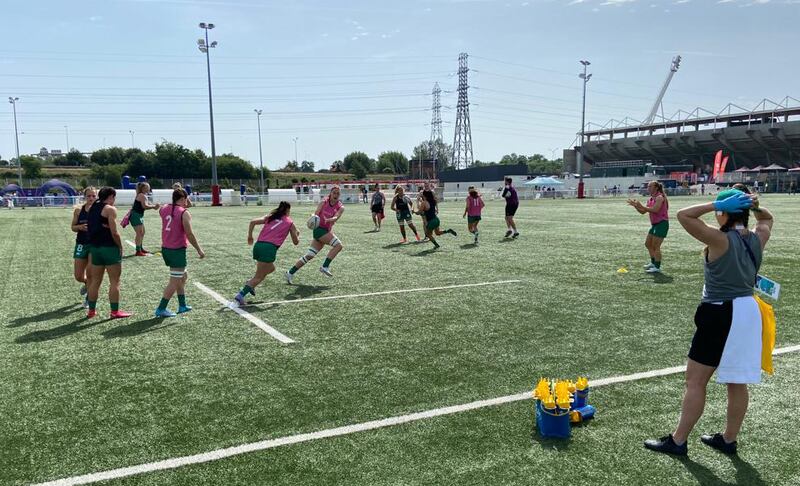
“We would have players who would cover 110 metres per minute in a seven-minute half,” pointing out the intensity and speed at which they must operate. The ball-in-play time against Argentina was a staggering 11 minutes in a 14-minute game. Most of the men will run over 9.5 metres per second: Jordon (Conroy) and Terry (Kennedy) over 10.
“We also look at a metric, ‘High Metabolic Load,’ which is an algorithm that works out acceleration, deceleration, contact and high-speed running. There is very little difference in the running demand between game one and game six, but it is how well you recover. Our lads would be well educated in recovery by the nutritionists.”
The mental acuity required is significant, players might make up to a dozen decisions in 60 seconds. Who impresses him most as an athlete? “Lucy Mulhall is one of the best athletes that I have ever seen or worked with in my life. Forget about the games it is how she carries herself around the training environment, the standards she sets, it’s incredible.
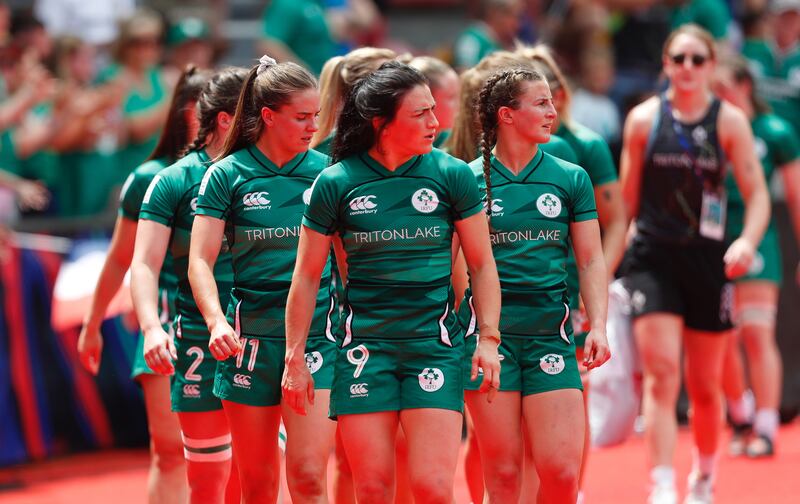
“Amee-Leigh Murphy Crowe is a serious athlete, the speed she has; she is so driven. They have a really high pain threshold too. Harry McNulty plays play every game and is so durable. The speed of Jordon Conroy, the magic of Terry Kennedy, his footwork, and great instincts. He (Kennedy) is running at high velocity all the time. How he repeats it is just off the chart.”
Chief Analyst John Farrell has footage spliced and diced for McNulty — Gordon Hamilton provides the service for Topping — on the final whistle, the players scurry to secure one of the five iPads to review the game. Some seek out Montgomery or Orla Armstrong (head physio, Men’s Sevens) to minister to soft tissue issues. Television doesn’t fully convey the magnitude of the collisions.
Only 12 players can tog out for a match, so someone barring injury, will compete all the prep but sit in the stand. There is a huge element of selflessness required in such a small group, a player cannot become an emotional millstone, moping around.
Good characters are required as well as good players; Stacey Flood fulfils both criteria as do the entire squad from teenager Erin King, currently doing her Leaving Cert, to global stars like Mulhall and Murphy Crowe, who picked up three awards at the season ending gala dinner on the Sunday night — top try scorer, try of the year and member of the team of the year.
The tournament brings two notable firsts; the men beat South Africa in a Sevens match and reach the final before going down to Fiji. The women also excel, reaching the semi-finals before losing to Australia and then Fiji in the bronze medal match. They finished a superb fourth overall in the World Series from modest beginnings.
[ Ireland lose out to Fiji after making historic first Sevens men’s finalOpens in new window ]
McNulty is aware of polarising dialogue about disputed primacy between the Sevens and 15s games in Ireland. For the time being they are codependent on playing resources. The goal is to reduce or remove the dual allegiance.
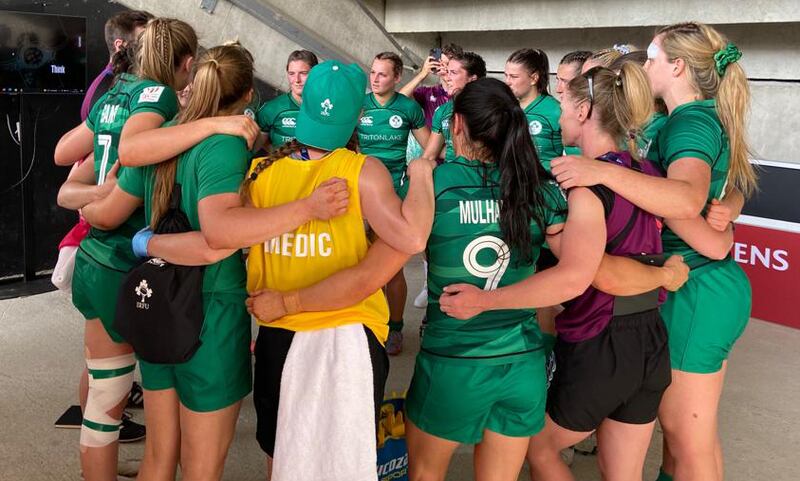
“Greg (McWilliams, 15s national coach) and I work in the same office, so we talk all the time. Ultimately, we are trying to do the same thing which is create a world-class women’s programme. We know we need the best players to be able to achieve that. Managing them properly is massive.”
He points out that the two coaches are aligned when it comes on which form of the game is a priority at a given time for those that play both. The Ireland Women’s Sevens have two Rugby Europe tournaments (Lisbon, Krakow) coming up before joining the Men’s squad at the World Cup qualifying event in Bucharest.
The top four teams in each will head for the World Cup finals in Cape Town in September. McWilliams will take a touring squad to Japan to play Test matches against their hosts on August 20th and 27th, a chance to evaluate the broader talent base without the Sevens cohort.
Topping’s squad are in Zagreb this weekend, have another Rugby Europe tournament, before heading for Romania. The final round of their World Series is on Los Angeles at the end of August from where they’ll be hoping to go straight to the World Cup.
There are suggestions that a Six Nations Sevens tournament, senior and age-grade, is in the pipeline. Some view Sevens as akin to the child catcher from Chitty, Chitty Bang Bang in absconding with, and imprisoning young talent. It’s a pathway not a cul-de-sac. Time will reveal as much.























